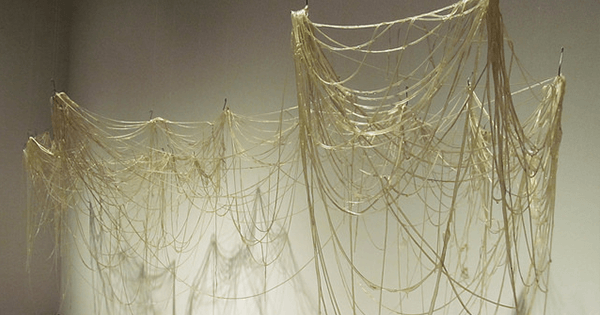
Lately there have been a slew of compelling documentaries focusing on one person, such as Amy Winehouse, Nina Simone, Anthony Weiner. It used to be that you couldn’t even book documentaries into movie theaters, they were considered such box office poison, but the public’s taste has changed for the better. One reason may be that these biographical documentaries deliver a sense of character far richer and more complex than the typical Hollywood feature film. Screenwriters are trained to distribute one-and-a-half or at most two traits per character (see, for instance, the current, disappointing Money Madness, where the protagonist played by George Clooney is first craven, then noble: this turnabout is considered sufficient narrative “arc” by feature film standards), whereas there is no end to the head-scratching contradictions of the eponymous protagonist in the documentary Weiner. Formally, it must be said, very few of the recent documentaries break new ground, and they often rely on a dubious bag of sonic and editing tricks in an effort to jazz up their subject, while raising ethical questions about exploitation of vulnerability or invasion of privacy. Others err on the side of hagiography. Still, when they hit it right, the result can seem a revelation about the twists and turns of a human life.
Two movies about contemporary women artists have opened recently, one exemplary, the other less so. The terrific one is Eva Hesse, directed by Marcie Begleiter. I had long been fascinated by the dazzlingly innovative work of this sculptor, having visited her posthumous retrospective several times in the ’70s, read books and articles about her, and even written a catalog essay about her drawings for a show at the Contemporary Art Museum in Houston. I think I was even a little in love with Eva Hesse (she looked beautiful in photographs), and certainly enamored of her artworks. So I was predisposed to like this film, if it taught me anything new, while initially skeptical that it might. It taught me plenty. There were revealing interviews with her articulate sister, her best friend, her ex-husband (the sculptor Tom Doyle), art critics, museum curators, and fellow artists such as Robert and Sylvia Mangold. I learned about her precocious, self-conscious adolescence, her art school training at Yale, her high ambitions to make it in a male-dominated art world, her rocky marriage, her bouts with depression and illness, her aesthetic breakthroughs in exploring new materials. That she died at 34 from cancer brought a built-in shape and poignancy to the documentary. Still, the filmmaker did not elect a strictly chronological approach, choosing to deepen the shadows gradually, so that we learn somewhere in the middle that she had grown up in Nazi Germany, had escaped with her sister via Kindertransport, had been reunited with her parents after the war, and that in the United States her mother had committed suicide, at which point her doting father raised the two girls.
We also witness the affecting story of the friendship between Eva and Sol LeWitt, a major artist in his own right who encouraged her to break out in new directions. “Just do it!” he wrote to her. (The diaries and letters of these two artists are read by actors.) LeWitt was apparently in love with Hesse, but she regarded him with deep, sibling-like, affection, and as she told a friend who encouraged her to pursue Sol, you don’t go to bed with your brother. Meanwhile, and this is probably the most exceptional part of the documentary, we are given a thorough grounding in the art scene of the time, and how she both fit into and departed from the minimalist sculpture of, say, Carl Andre and Donald Judd. The critic Lucy Lippard makes the case that Hesse brought a playfully sensuous, womanly, modestly unheroic sensibility to her installations. It’s true that other feminist women artists of the day were challenging the hard-edged masculinist art of the geometric minimalists: think of Miriam Schapiro’s quilt-like pattern art, Judy Chicago’s dinner plates, or Lynda Benglis’s and Louise Bourgeoise’s biomorphic sculptures. What impressed me about Hesse’s approach, though, was that she opened up a space for the comically ragged and quotidian, without relinquishing the rigor of the minimalists.
Call Me Applebroog is about the 86-year-old artist Ida Applebroog. I was familiar with her disturbing work—the cartoon-like figures of men and women, often enacting sexual or violent scenarios—largely through my friend the critic Carrie Rickey. I was eager to learn more about the source of her imagery, but Applebroog proved a close-mouthed, less-than-forthcoming commentator on her own life or style. Or even her name: she was born Ida Applebaum, but changed the baum to broog—why she can’t say. She mentions offhandedly having a husband, Gideon Horowitz, but nothing else about him, what he did for a living, or the nature of their marriage—certainly nothing that ties him to her obsession with male domination and brutality. (The film happens to be dedicated to Horowitz.) No other artists or critics were interviewed, so we are left watching Ida sketching or looking through her old work, without any larger art-world context. For instance, Ida describes drawing her genitalia dozens of times, and we see the results, but we are not told about other women artists at the time who worked with body images. Ida is presented as a force of nature, solitary and instinctive. The documentary was made by her daughter, the experimental filmmaker Beth B., which may explain the filially reverent tone as well as the reluctance to push her mother further. Nor do we get a sense of the specific mother-daughter dynamic of their relationship. They kiss at the end, which is nice to see. Ida has obliged her daughter, sort of, and vice versa in the production of this film; but we may be forgiven perhaps for feeling like nosy intruders on a closed book.
Both Eva Hesse and Call Me Applebroog are being distributed by Zeitgeist Films, a small, gutsy company committed to intriguing documentaries. Bravo, Zeitgeist!

